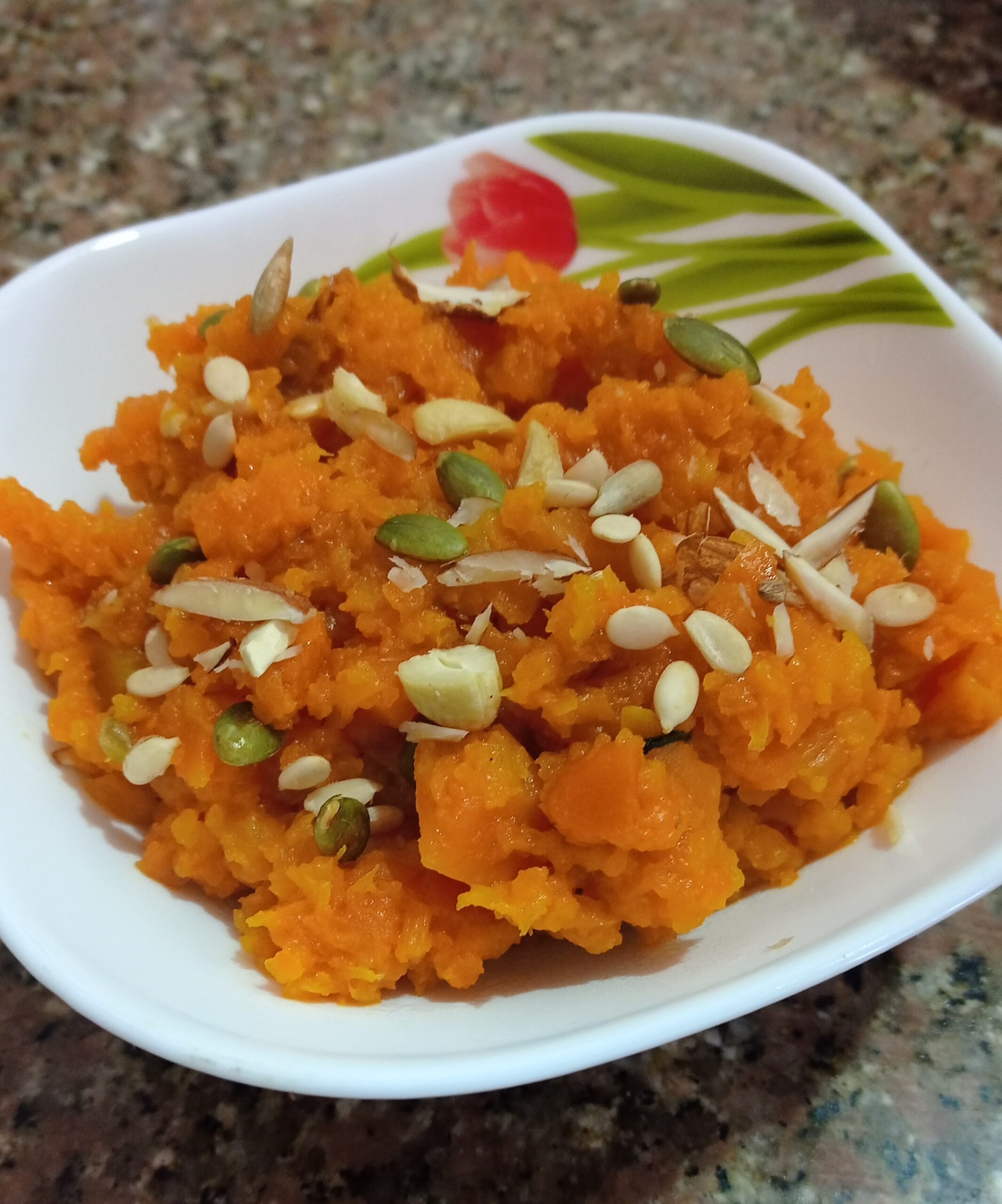When you follow my thorough step-by-step instructions of making the well-known Indian dessert known as carrot halwa (also known as gajar ka halwa in Hindi or gajrela in Punjabi) is so easy! Whether you prepare it the old-fashioned way on the stovetop or take some liberties with milkmaid, khoya, or the Instant Pot.
Describe Halwa ?
The term “halwa,” which refers to pastries prepared with ghee and sugar, derives from the Arabic word for “sweet.” Indian halwa is a dessert that is utterly delicious, whether it is made with noodles (vermicelli), lentils (moong dal), grains (like semolina), or vegetables (like carrots or beets).
Contrary to popular misconception, Middle Eastern halva, a confection made mostly of sesame seeds, is not the same as Indian halwa.
Halwa is a delicious dessert that is only served on special occasions. Although it isn’t difficult to create, it does take some time. Use one of my brilliant shortcuts given below if you want to eat gajar ka halwa more frequently.
How to make carrot halwa ?
In North India, carrot halwa is a common dessert that is especially well-liked in the winter. The only ingredients required for the classic gajar ka halwa recipe are carrots, whole (full-fat) milk, ghee, and sugar; khoya (evaporated milk solids) or condensed milk are not used.
To understand how to use khoya or milkmaid (sweetened condensed milk), simply go to the relevant section below!
Red Delhi carrots are soft and juicy, therefore I love to use them when making halwa. However, as long as they are not fibrous, stringy, or stiff, you may use any carrot, whether it red, orange, or even black.
Making carrot halwa is one of my favorite desserts since it keeps well for a long time. We always have something sweet to nibble on after meals since I can create a batch that keeps for up to 10 days in the fridge.
How to Prepare and Grate Carrots for Gajar Halwa?
1. Rinse 650 grams of carrots in water several times. Choose 8 to 9 medium-sized, soft, juicy carrots or 6 to 7 long carrots.
Remove the water. Carrots should be peeled with a vegetable peeler. Peeled carrots should be set aside.
The carrots must be moist and soft. Red or orange carrots are also acceptable, but only if they are delicate.
2. Next, use a box grater or a food processor to shred the carrots. You may use a regular measuring cup to calculate the amount of shredded carrots you need—about 4 to 4.5 cups.
Using a food processor to grind carrots is more simpler than using a box grater or a handheld grater.
Make carrots.
3. Put all of the shredded carrots in a large kadai or pan.
4.Add 4 cups of full-fat milk. Activate the burner.
5. Combine milk and carrots that have been shredded.
6. On a low to medium heat, cook this combination. The milk will start to froth after a short while and then start to reduce gradually.
7. Stir the halwa mixture often, scraping the evaporated milk particles off the sides of the kadai as you do so. The cooking mixture should now contain the milk solids.
8. Continue cooking the milk and carrot combination until the liquid has been reduced by 75%.
Produce Gajar Halwa.
9. Include 4 tablespoons of pure butter, or ghee. Remember that when you add the ghee, some milk will still be present.
10. Stir well.
11. Add the sugar next, 10 to 12 tablespoons or to taste.
12. Add cardamom powder, either 12 to 1 teaspoon of pre-ground cardamom or 5 to 6 green cardamom pods that have been finely ground in a mortar and pestle.
13. Mix thoroughly.
14. Keep simmering on a low burner while stirring often.
15. Continue to simmer the mixture until it begins to thicken and reduce more. Stir occasionally.
16. Add the nuts and dried fruits of your choice once the halwa has thickened to the consistency of pudding. 12 cashews, 12 almonds, and 2 tablespoons of golden raisins have been added.
Reminder: Chop the nuts before adding. You may keep raisins whole. Saffron can be added at this stage if using.
17. Stir and boil while stirring once more.
18. Continue simmering until the halwa mixture is dry. You should notice fine milk particles in the mixture when the milk has entirely evaporated. Additionally, Ghee will be seen to be gushing from the sides.
Recall to scrape the milk solids from the pan or kadai’s sides and stir them into the carrot halwa. The halwa is good with a little wetness as well.

